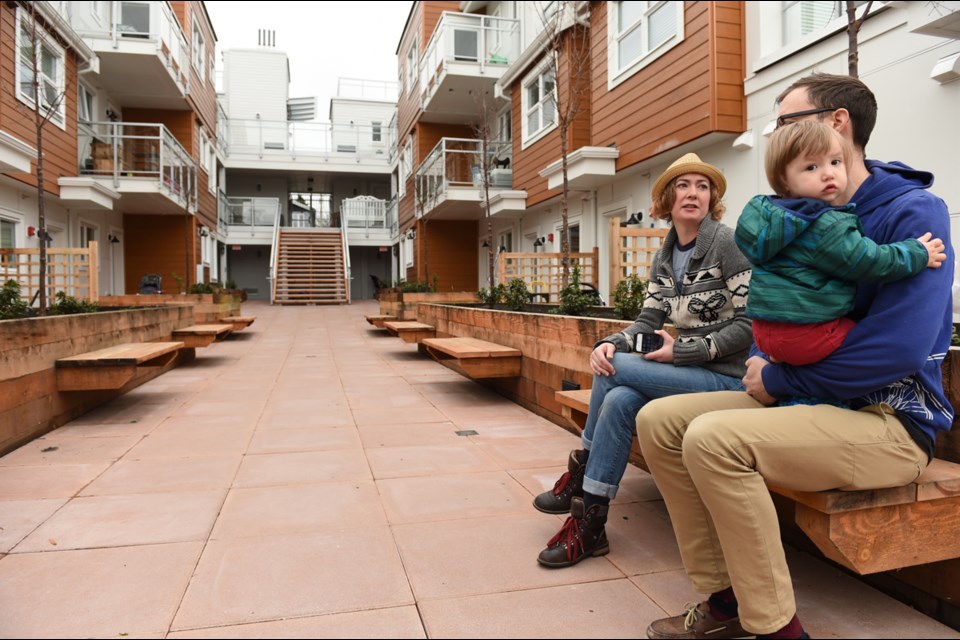Taryn Griffiths grew up in North Vancouver, lived in neighbourhoods including Yaletown and Arbutus Ridge, but she finally feels at home in Kensington-Cedar Cottage.
Griffiths was looking for “community” and found it in Vancouver’s first cohousing complex, which recently finished construction on what used to be three double-deep lots on East 33rd Avenue near Argyle Street.
At the end of February, Griffiths, her husband Darryl and five-year-old son Wilder, moved into their new digs — a two-bedroom suite in the 31-unit building that’s now home to seniors, empty nesters, singles, couples and young families. Crews are completing touch-up work as residents settle in and unpack. The eclectic group includes Ben Ernst, co-owner of Earnest Ice Cream and Doug and the Slugs drummer Wally Watson. Identical twin sisters and their families also live in separate units, as do two brothers and their families.
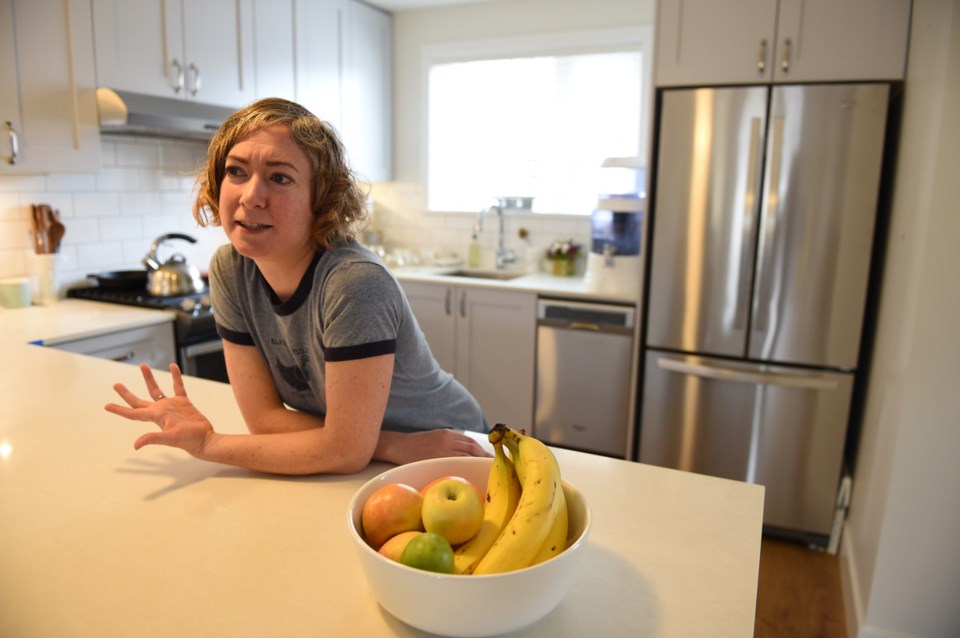
Cohousing is a collaborative form of living in which most residents own their homes within the complex — each unit has its own kitchen, living room, washroom and bedroom or bedrooms — but they also share large common areas, and are responsible for duties such as cooking common meals and handling recycling.
At Vancouver Cohousing, each unit has its own small yard or balcony. Shared amenities include a spacious kitchen and dining room in the common building, a yoga studio, shared office space, children’s play area, laundry room, craft room, teen room, workshop, bike room, storage room, central courtyard, rooftop deck, a deck which will serve as community garden space in the future, and two guest rooms for visitors. Residents hold monthly meetings in which decisions are made by consensus and the aim is to have four communal meals a week — residents don’t have to attend, but they must sign up for a cooking team every month or two to help with preparations.
“Breaking bread” with neighbours is a key concept within cohousing communities, according to Griffiths.
“Our California architect, Charles Durrett, who actually coined the term cohousing and brought the concept from Europe, says five meals a week is what you should aim for,” she explains. “He says breaking bread brings the community together and helps you sort out your differences. That’s the heart of the community — the meal program. We thought, let’s aim high and go for four, see how it goes and make adjustments if we need to. But I have never known a group of people that enjoys being together so much. It’s incredible.”
NEIGHBOURHOOD KNOW-HOW
It took about four years to realize the cohousing project from inception, requiring the group to navigate city hall bureaucracy and the rezoning process, to plan the building and to complete construction. Residents were heavily involved in determining the final design, which is meant to encourage interaction — exactly what Griffiths longed for.
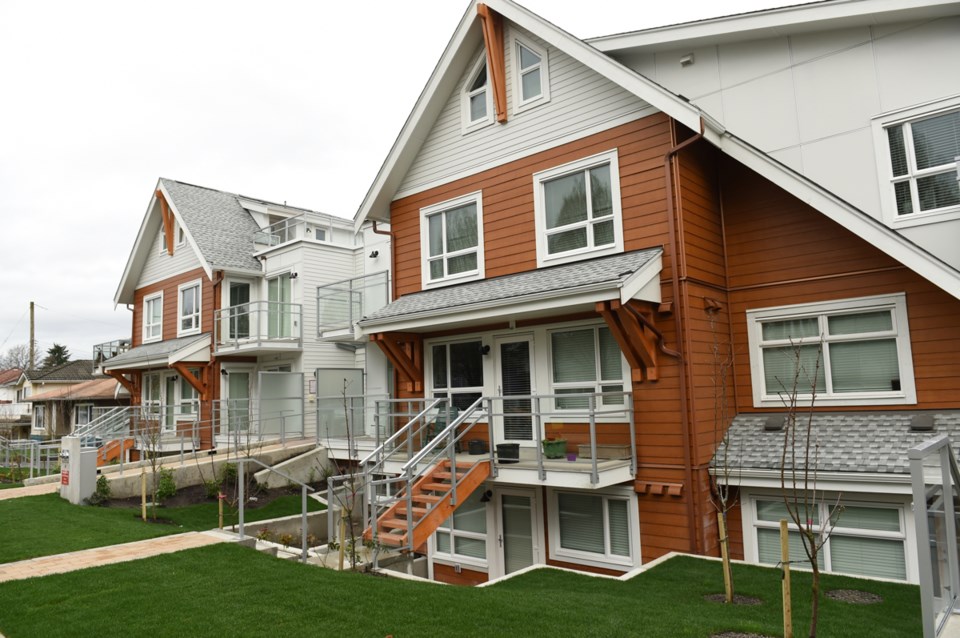
When living in a Yaletown condo years ago, she said high turnover meant as soon as she got to know someone they moved. On the West Side, where she recently lived for six years in a home once owned by her husband’s grandmother, finding community remained a problem. The only neighbour she saw somewhat frequently lived next door — she was retired and a gardener. A low fence between the two properties eased communication.
“I’m so happy to be on the East Side. The West Side is dying. We lived in Arbutus Ridge, so everyone would say it’s beautiful, but it’s so quiet. Everyone’s working, the kids are in classes every day after school. The kids don’t play in the front yard,” Griffiths says. “People don’t mow their own lawns. They hire people to do all their gardening. There were maybe five of us on the block who would actually do our own lawns. There was an empty house across the street, an empty house behind us — and just so quiet.”
Griffiths tried to hold weekly open houses for the neighbourhood and initially 10 people showed up, but numbers soon dropped off — her old neighbours were "wonderful," but many of them were very busy. By summer it died out. She also hosted a BBQ that attracted 10 neighbours, but none made it to a craft night.
Griffiths maintains the architecture and site plan of the neighbourhood also didn't support community well because it was designed for privacy. High fences and a lack of porches keep people apart.
COST OF COMMUNITY
Creating the kind of community that cohousing proponents seek isn’t cheap. The Vancouver Cohousing group, which acted as developer, had to find a large enough plot of land on which to build in the city’s notoriously pricey real estate market. The group didn’t add the usual 15 per cent developer markup, but it still had to cover building costs. Prices ended up ranging from about $285,000 for a studio to just over $800,000 for a large unit. But residents could opt for smaller, less expensive suites because they have access to so much common space. Other advantages include the ability to share childcare and vehicles.
The City of Vancouver, meanwhile, insisted two of the 31 units had to be rentals in perpetuity. Vancouver Cohousing purchased those units as a community and once their mortgages are paid off, the rental income will become revenue. The one-bedroom rental went for $1,500 a month, while the three-bedroom went for $2,900.
The monthly strata fee is 38 cents a square foot. The cost of communal meals will be tracked and shared.
Donelda Rose, a retired teacher, lives in a 930-square-foot, two-bedroom unit with partner Monty Bruce. The pair paid just under $700,000, but have no regrets.
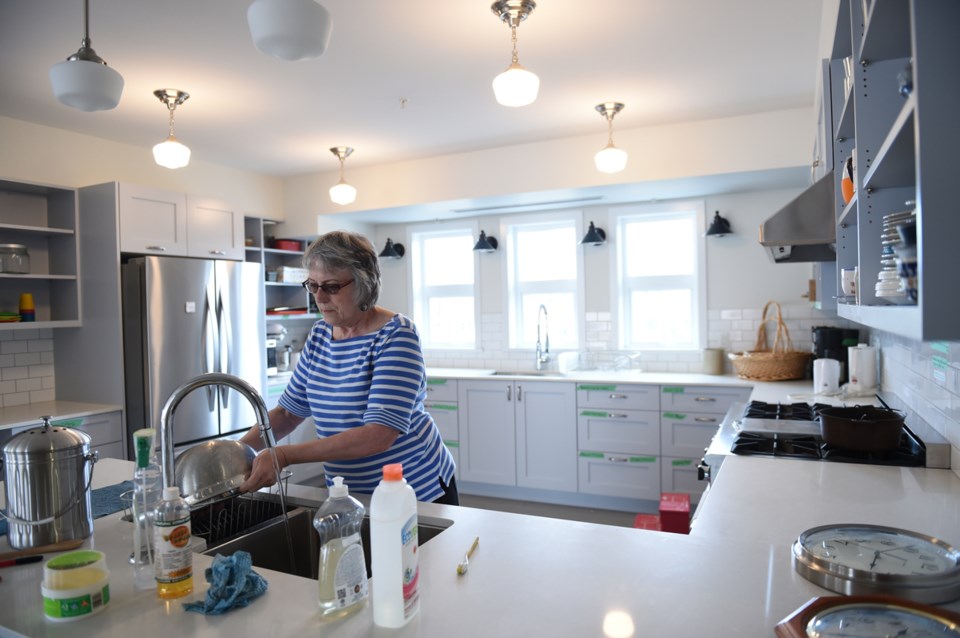
“The appeal for me is living in a community of like-minded people where everybody participates,” she says, explaining she used to live in an 87-unit Richmond condominium. “We had a strata council of seven people so the seven people did most of the work. It seemed to be an uphill battle for almost every project. Here, there are teams working on all sorts of different things and you’ll see the progress that has been made in less than two weeks.”
Rose, one of the co-leads on the garbage and recycling team, said moving in still feels “like a dream.”
She dismisses suggestions that residents are in a honeymoon phase, pointing out most have worked and stayed together for the four years it’s taken to see the project through.
“We’ve had a couple of situations where people have disagreed, but it’s like a family where we just talk about it and get over it and get on with it. I know it’s not going to be utopia. There are going to be differences of opinion, but coming from a strata where we had a lot of apathy and dissention, this is just so amazing.”
Griffiths doesn’t expect the collaborative spirit to fade over the years either.
“We don’t all think the same way about the same issues. But we’re all curious. We all want to know each other — and we want to be known as well.”
ALL IN THE FAMILY
Miles Angel, age two-and-a-half, slips on a pair of adult-sized running shoes, wanders out of his parents’ ground-floor unit and shuffles across the courtyard to visit his grandparents on this overcast March morning.
It’s exactly the kind of scene his father, Colin Angel, hoped would play out.
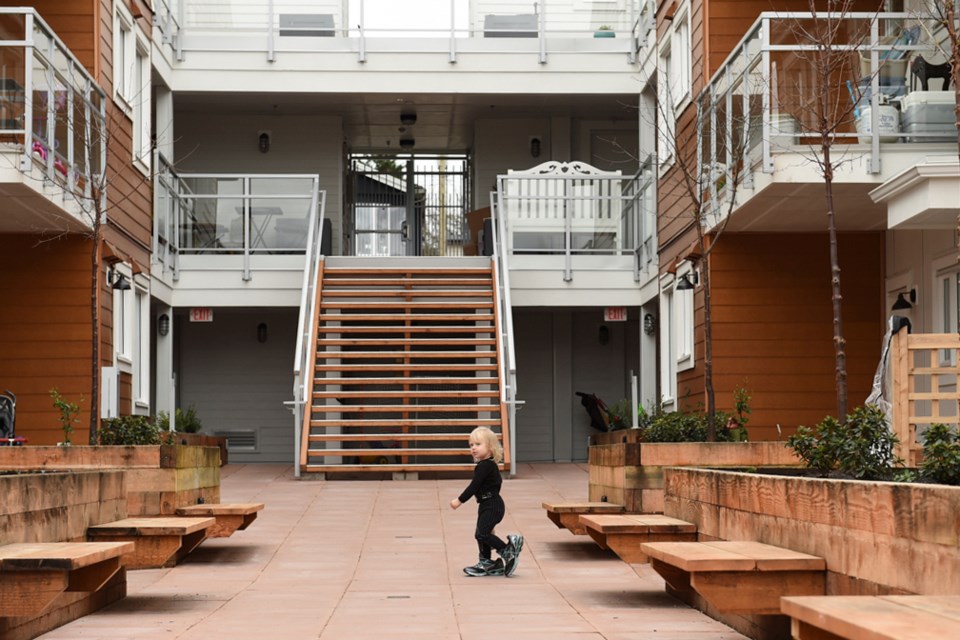
Angel, a software consultant who helped shepherd the cohousing project through the complex rezoning and construction process, spent little time with his own grandparents as a child. He convinced his aging parents to move from the Okanagan to Vancouver and buy into the complex, so that three generations could live in close proximity.
“It was a personal goal for me that [Miles] get direct access to his grandparents and he does,” Angel says during a brief break from work in the shared office.
Like Griffiths, he found condo living isolating — entering the building with a fob key, fobbing into the elevator to get to his floor, which had restricted access, and walking through the anonymous, windowless hallway to his suite.
Moving into a socially and communally-oriented building has changed all that for his family.
“[Miles] gets 300 per cent more social interaction here with zero effort,” he says.
@naoibh
Note: This story has been updated since first posted.
